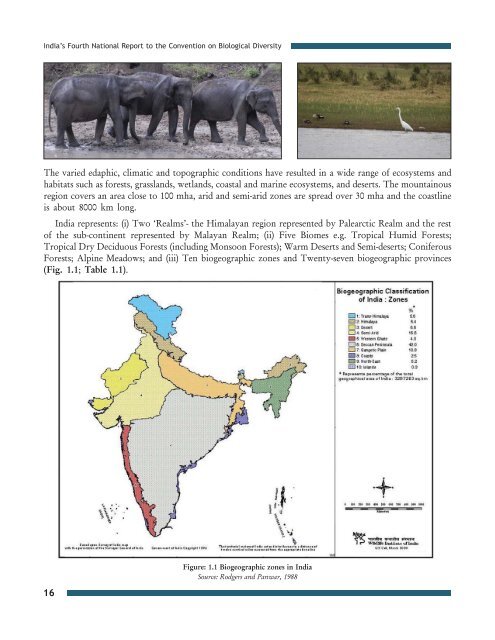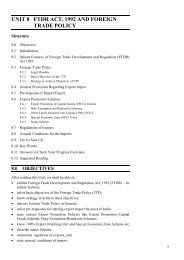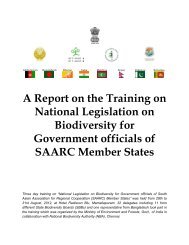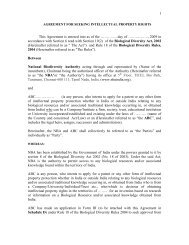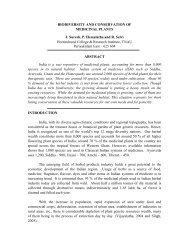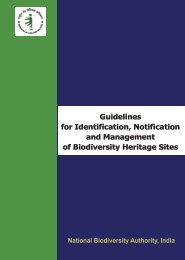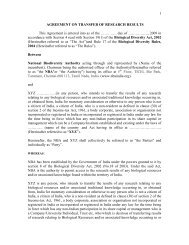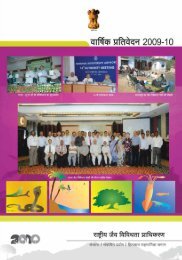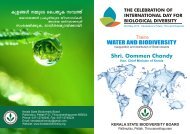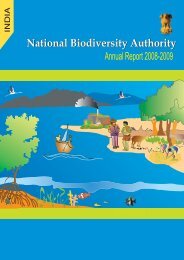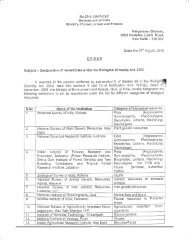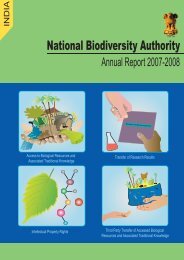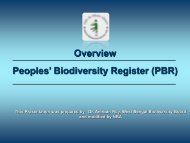Part 1 - English version (PDF) - Convention on Biological Diversity
Part 1 - English version (PDF) - Convention on Biological Diversity
Part 1 - English version (PDF) - Convention on Biological Diversity
You also want an ePaper? Increase the reach of your titles
YUMPU automatically turns print PDFs into web optimized ePapers that Google loves.
India’s Fourth Nati<strong>on</strong>al Report to the <str<strong>on</strong>g>C<strong>on</strong>venti<strong>on</strong></str<strong>on</strong>g> <strong>on</strong> <strong>Biological</strong> <strong>Diversity</strong><br />
The varied edaphic, climatic and topographic c<strong>on</strong>diti<strong>on</strong>s have resulted in a wide range of ecosystems and<br />
habitats such as forests, grasslands, wetlands, coastal and marine ecosystems, and deserts. The mountainous<br />
regi<strong>on</strong> covers an area close to 100 mha, arid and semi-arid z<strong>on</strong>es are spread over 30 mha and the coastline<br />
is about 8000 km l<strong>on</strong>g.<br />
India represents: (i) Two ‘Realms’- the Himalayan regi<strong>on</strong> represented by Palearctic Realm and the rest<br />
of the sub-c<strong>on</strong>tinent represented by Malayan Realm; (ii) Five Biomes e.g. Tropical Humid Forests;<br />
Tropical Dry Deciduous Forests (including M<strong>on</strong>so<strong>on</strong> Forests); Warm Deserts and Semi-deserts; C<strong>on</strong>iferous<br />
Forests; Alpine Meadows; and (iii) Ten biogeographic z<strong>on</strong>es and Twenty-seven biogeographic provinces<br />
(Fig. 1.1; Table 1.1).<br />
16<br />
Figure: 1.1 Biogeographic z<strong>on</strong>es in India<br />
Source: Rodgers and Panwar, 1988


